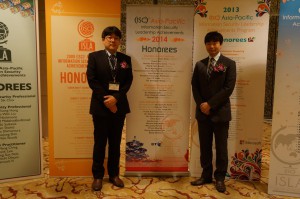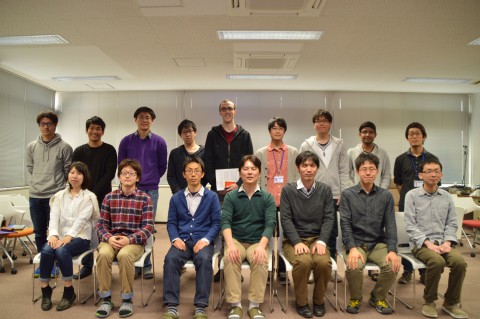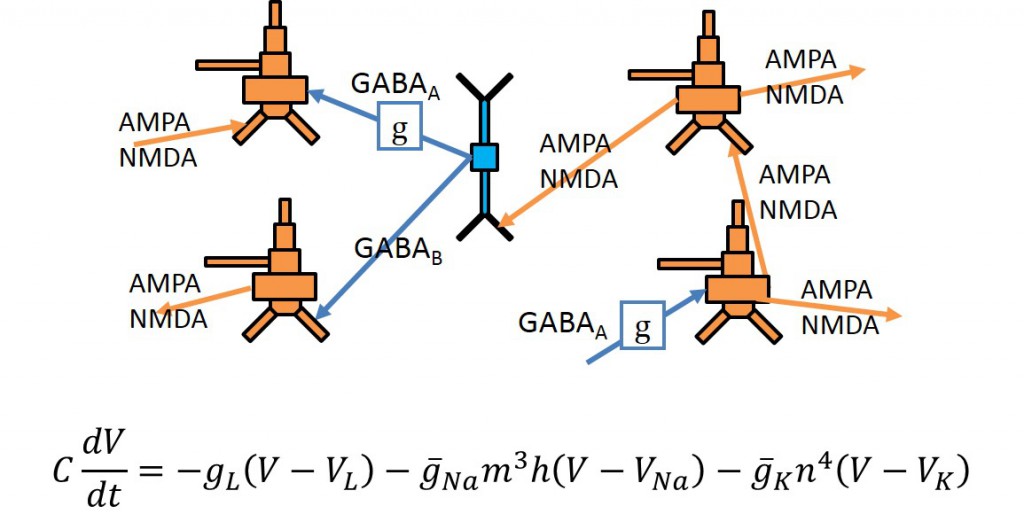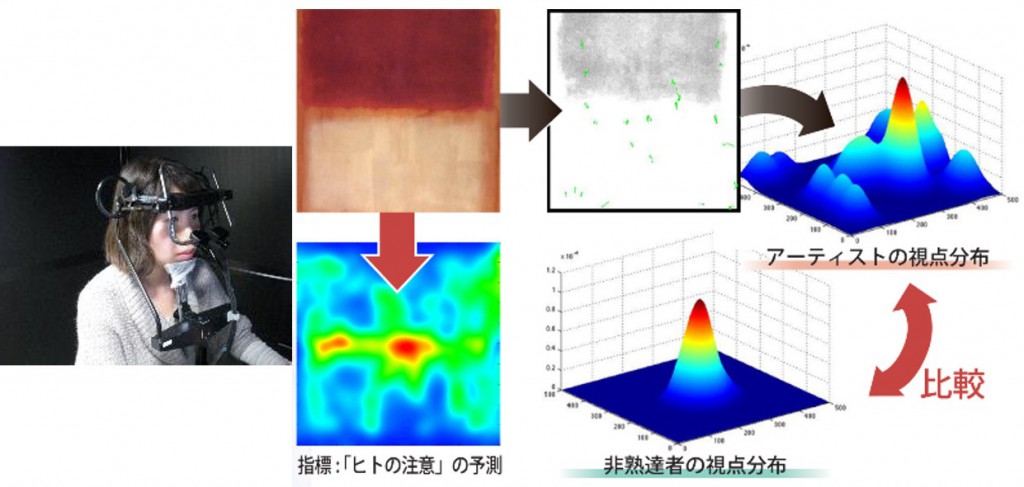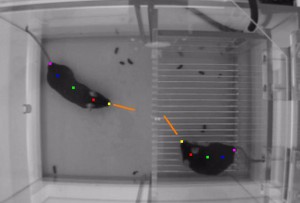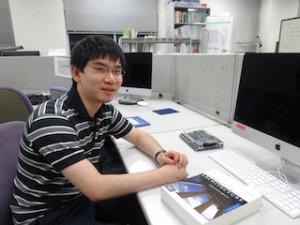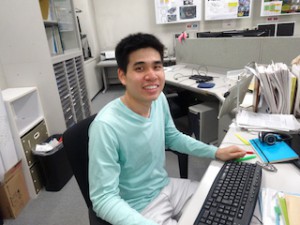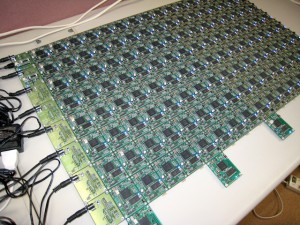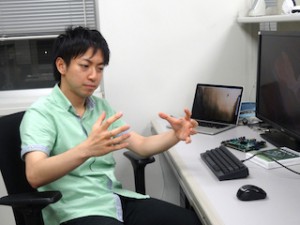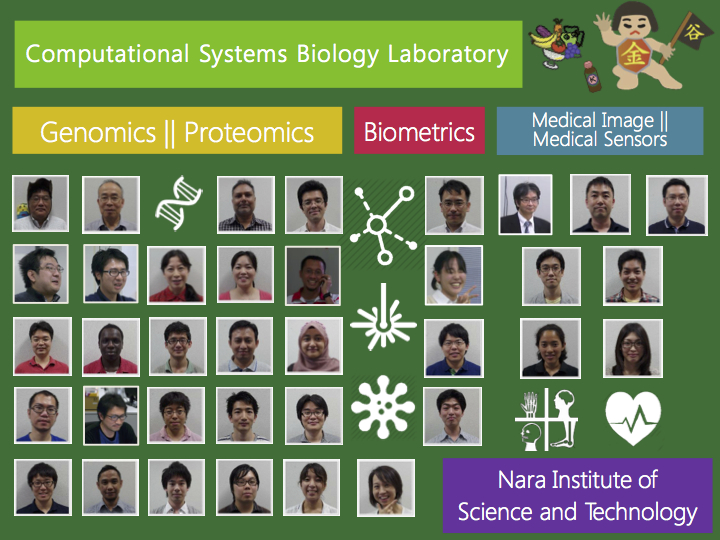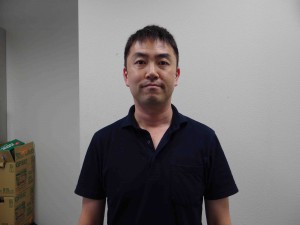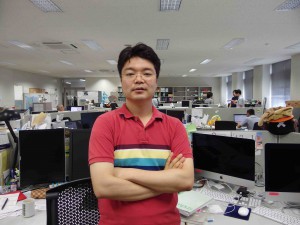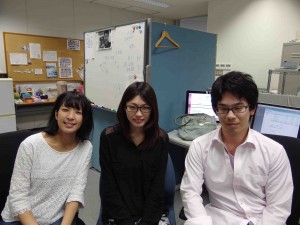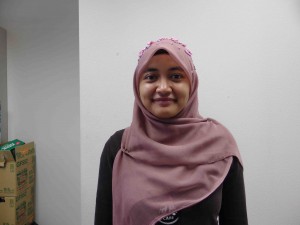Oral Kaplan
Master’s Degree Student
Interactive Media Design Laboratory
Graduate School of Information Science
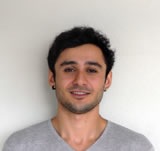
It has been almost 7 months since I started my new life in NAIST, in Interactive Media Design Laboratory, and I am pleased to say that life is good, both professionally and personally. Well, as you might guess at first it was too boring. If you bring a 24 years old metropolitan kid to a rural area like Takayama, of course it is going to be too boring. But this is life, you have to change for the better and move forward with every passing moment.
That’s being said, as a MEXT Scholarship Student I am glad that I have been selected as one of the privileged students in here. It is obvious that the main reason why I wanted to be a part of NAIST was completely professional; I wanted to study in an institution which specialises in what they are doing. Well, I would also prefer a more lively area of course but nothing is perfect. There is one thing I am sure of, I am glad that I am a part of Interactive Media Design Laboratory. “Are you saying other labs are not good?”, of course I am not saying or implying that, but for the time being this is where I belong.
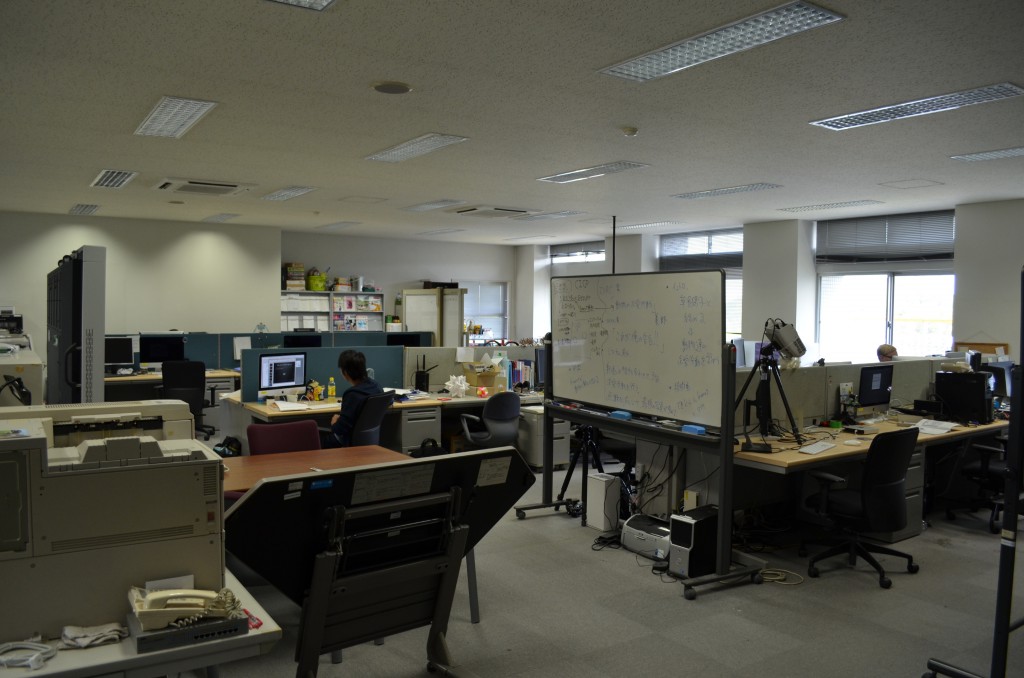
What are we doing here? As one might guess the name ‘Interactive Media’ governs a huge field of expertise. If you take look at our laboratory’s web site, you can see that almost all of our researches are connected to usage of visual information in one way or another, yet at the basic level they are so different from each other. Of course as I mentioned before the word ‘Interactive Media’ governing different things inside is a cause for this result, but not only by itself. One thing, and I think this is something special about our lab, the first thing a student encounters after enrolling is a simple question; ‘What do you wanna do here?’. Simple, yet intuitive and effective. We all agree that it is no fun to work on something that you have interest at all, but in Interactive Media Design Laboratory, the collaboration between professors and students allows us to be productive in a field that we like, and what we want. Surely you can encounter some special cases too, not everything worths a research, this is where our professors world-wide acknowledged expertise comes in handy. Ow, did I forget to mention that our professors are highly accomplished and recognised in their fields internationally?
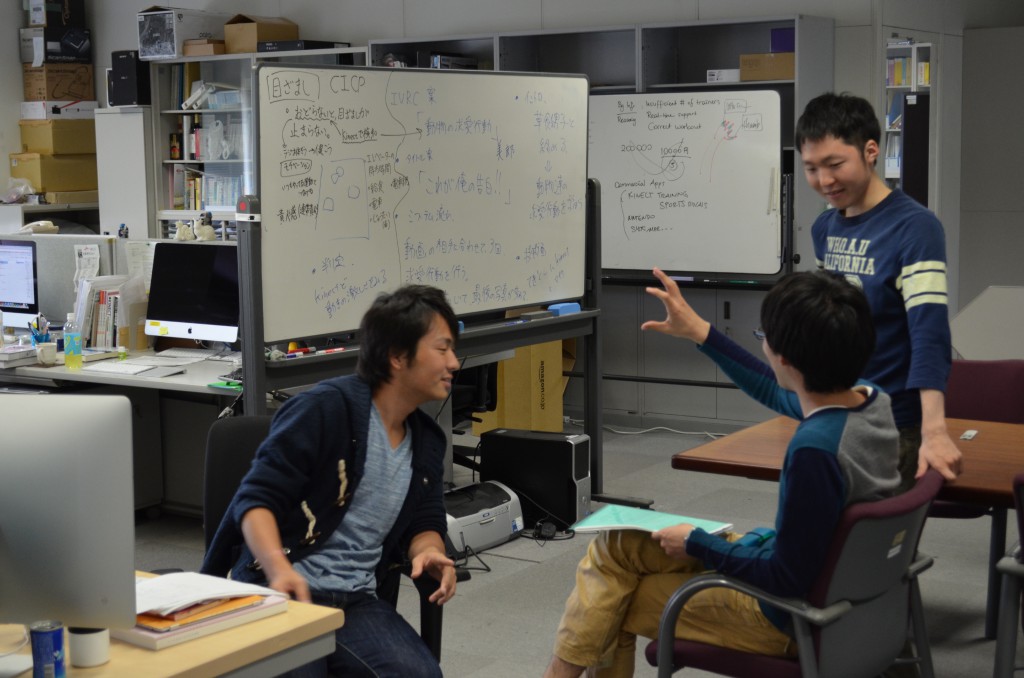
After all this talk, you might think ‘Yea, yea… But what do you do?’. Sorry to disappoint you but I also have no clear answer to this question, at least not yet. Well, for outsiders I might seem like an experienced member of Interactive Media Design Laboratory but I am a new student. At the basic level, my research area is going to be, probably, somewhat related to the application of interactive media methods in sport activities. One idea we currently have is ‘Workout Routines with Real-Time Motion Tracking Support’. Most people are wasting a lot of money on wellness activities just to obtain their dream bodies, why not make it less money and time consuming from the comfort of your home? This is subjected to change anyways, so it would be pointless to discuss this deeply here. Maybe I can find a better reasoning for my research. I guess the time will tell.
Aside from studying, if you are reading this right now, which is in English, you are either another fellow foreigner, or a Japanese whom is interested in learning English or having some conversation with a non-Japanese person. Feel free to drop by anytime, our lab will welcome you with a cup of coffee. With an amazingly high percentage of foreigners from different parts of the world, I think a sip of cultural shock would not be that bad. At the end, we should all agree on that variety is what makes a difference in this world…
I am leaving the scene to my colleagues and hope you will also enjoy their thoughts like I do.
Best regards.
=====================================================================
Amar Husejic
Master’s Degree Student
Interactive Media Design Laboratory
Graduate School of Information Science

When I entered NAIST as a Research student I was very excited to see people working on many different projects and ideas. It was very motivating since I was at the beginning of finding my own research topic and I knew that it was going to take some time. Also on that road we find out that not everything is interesting for us since that factor depends from person to person. After that you start to look at the research in a different way, so something what seemed interesting wasn’t anymore. Something that seemed interesting may still be interesting but the way of doing that might be boring and demotivating. So in this article I would like to talk about the ongoing researches in my laboratory which I hope that will inspire you to continue what you are doing even though it may seem hard or boring. If you truly believe in what you want, I think you should pursue it.
———————————————————————
#Title: Project MARUI – Towards Augmented Reality User Interfaces in 3D Media Production
#Name: Max Krichenbauer
#Abstract:
We analyzed the requirements for professional 3D design and developed a novel Augmented Reality user interface for 3D artists. This allows media professionals to work on their models as if they were physically present on their desk. This approach can make the creative work more efficient and less tiresome.
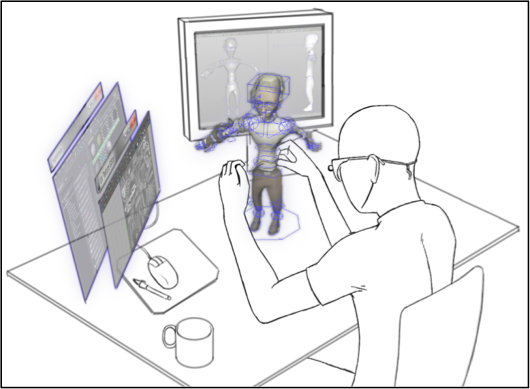
#Questions:
1. What is the motivation behind your research?
I want to invent new tools and devices. It is exciting to think that someday people will use my tools for their work. It is also fun to learn (often required – not just for classes), and work with new equipment.
2. Can you tell me what is or what was the hardest part of your research?
It is development. Trying to get things to work within limited time, while still taking classes is difficult. Also having to work with undocumented and often unclean code/libraries required for the project. More than once I had to dig through totally uncommented code from another developer, just to find a silly bug – that is: after spending even more time trying to find the bug in my own code.
3. Do you have a message for prospective NAIST students?
Don’t try to improve the campus social life. The people here are very happy without a social life or the limited social life of their lab. Find a social life outside of campus or start playing online games.
4. Will you continue to work on your research after graduation?
Yes, as a PhD student.
———————————————————————
#Title: Lumbar Vertebrae Pose Estimation using CT deformation for Diagnosis Assistance
#Name: Henry Chu
#Abstract:
The diagnosis of lower back pain often involves the examination of medical images such as x-ray and CT, but the poses of spine are different when taking these images making it difficult for radiologists to relate. In this research we minimize such pose difference to assist medical diagnosis by deformation of CT and registration with x-rays.
#Questions:
1. What is the motivation behind your research?
The motivation for my research is to help the doctors in the medical image diagnosis of lumbar spine. The current diagnosis requires the doctors to mentally relate the same anatomical structure in different image modalities (3D CT and 2D x-ray) where the poses of the spine are different. This research aims to make the pose of the spine identical by deforming the 3D CT volume to the pose of the 2D x-ray, as the result the doctors can reason between the medical images easily and hence improve diagnosis.
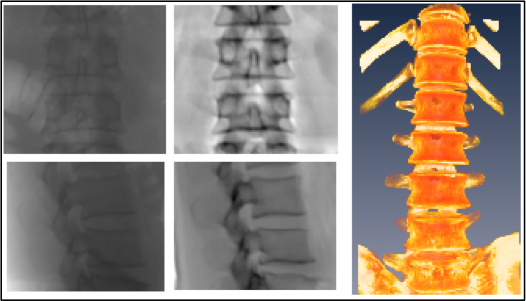
2. Can you tell me what is or what was the hardest part of your research?
Since we are working with medical images where they are intended to be used to make diagnosis of real patient, the biggest challenge is to acquire high accuracy of the deformation result to ensure correct diagnosis.
3. Do you have a message for prospective NAIST students?
It’s best to choose the research topics which interest you the most since they will become your motivation in the long run.
4. Will you continue to work on your research after graduation?
If possible I would love to work with medical images in the future since they are directly related to the application with the medical world.
=====================================================================
Damien Constantine Rompapas
Master’s Degree Student
Interactive Media Design Laboratory
Graduate School of Information Science
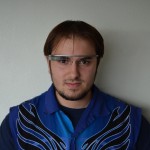
My name is Damien Rompapas. I am 21 years of age and I came to NAIST from Australia. I am an M1 student and work in the Interactive Media Design Laboratory.
Although I arrived a week late into the starting semester (April) I was still able to catch up to the work that I had been given very quickly, the staff were very helpful with helping me get setup with the on campus dormitory and all of the paperwork that was required. My lab even appointed another student to assist me with the first month of living in Japan. He was very kind to help us with getting used to life in Japan; such as getting my Japanese Residency card or to getting some money out of the ATM, as my Japanese level is close to zero.
After A week or two there was a hosted M1 Students Welcome party, which was fantastic. I had the chance to meet with a lot of people whom were also new to NAIST. Although some Japanese students were very shy, I think they also had a great time.
Classes are really enjoyable. Although I already had most of the knowledge the lectures provided due to my Bachelor Studies in Australia, I still learn a few new fundamentals. But one thing is for sure; the lab environment in here is just wonderful. It allows me to get dug-into my research and complete any tasks that I wish to complete.
Life outside the lab is just as enjoyable. My dormitory isn’t exactly large, but I quite like it. It has a small kitchen and a private bathroom, as well as a desk, wardrobe, fridge and a bed. Not only that, the campus has it’s own cafeteria which provides very affordable, but completely nutritious meals. I do love to cook, but I may be so busy that I will not get the time to cook for myself; so having a place like that on campus is a huge bonus.
Everyone in my lab is very friendly. I have already become good friends with each lab member; especially the Japanese students here are really kind! I was very surprised when my lab encouraged the use of English because if foreigners had come to the university where I came from surely they would have been forced to use English. I was not expecting it in Japan since English is not the native language.
However I do wish to learn and speak Japanese fluently. I am grateful that NAIST has a volunteer group who teaches Japanese to those whom are just beginning. I try to study as much as I can, but every time I try it seems like I mess it up. Everyone I try with is very patient, of course which is very nice.

Every time I walk into the lab, I feel that it is a great honour to be able to work in such a nice environment and I believe my work reflects that. Within the first month I produced an Augmented Reality project using the Google Glass dubbed “Miku Dance”, where the user would be able to see a life sized Hatsune Miku through the glass that would dance and sing for you. It was very popular when I demonstrated it for the recent Open Campus. Which pleased me greatly!
I look forward to continuing my studies in Nara Institute Science and Technology and provided I complete my Masters Degree, I am planning to continue with further studies as a PHD student.


